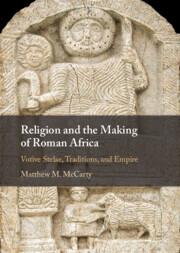References
Published online by Cambridge University Press: 24 October 2024
- Type
- Chapter
- Information
- Religion and the Making of Roman AfricaVotive Stelae, Traditions, and Empire, pp. 398 - 446Publisher: Cambridge University PressPrint publication year: 2024

